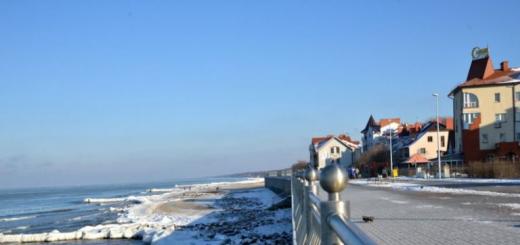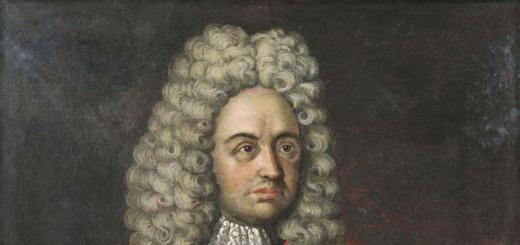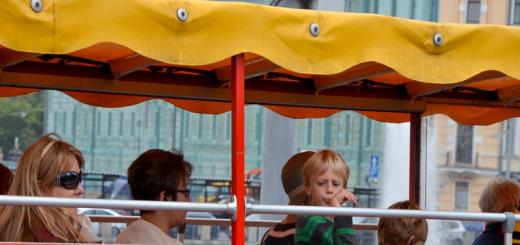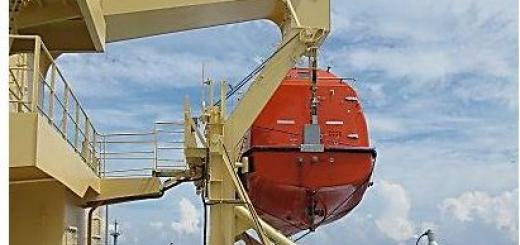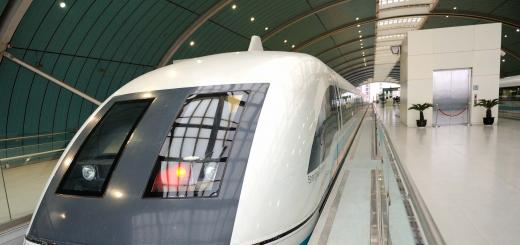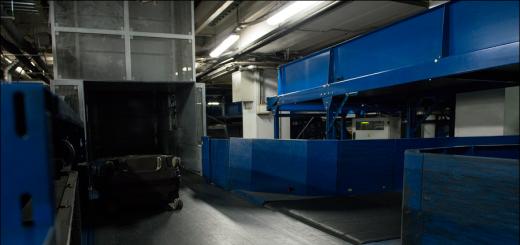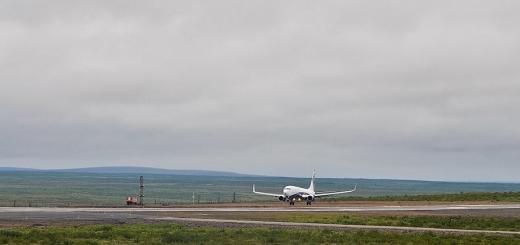Heidelberg Castle is one of the oldest German castles, it is located in the valley of the river Neckar, not far from the city of Heidelberg. In 1693, the castle was destroyed by the French conquerors, and now it is partly in ruins. Every year, thousands of tourists from all over the world come to Heidelberg Castle, attracted by the spirit of past luxury and ancient history.
Castle architecture is not limited to one style. Different schools are mixed here - Renaissance (eastern and northern parts of the castle), Gothic (King's Hall and library), German Baroque. The imagination of tourists is struck by the contrast between the antiquity of the old walls of the castle and the splendor of the restored part, between austerity and luxury.
![]()
But Heidelberg Castle is not only remarkable for its architecture. Previously, it housed the world's first pharmacy, now a museum has been set up in its place. There are ancient apothecary scales, instruments of medieval surgeons and many other interesting things. Visitors to the castle are also usually interested in Renaissance wall sculptures, a sundial with a zodiac circle, and a huge old wine barrel in the cellar.
![]()
History of Heidelberg Castle
The first mention of Heidelberg Castle dates back to 1225. It is in this year that the history of the castle begins. The castle was the residence of the influential German Wittelsbach dynasty.
Documents of 1303 already tell about two buildings - the lower and the upper. It is believed that the current Heidelberg Castle is a newer lower building, which was founded in the period from 1294 to 1303.
![]()
In 1537, a fire broke out in the upper building, as it was struck by lightning. After the disaster, the upper castle was completely destroyed. At that time, the Wittelsbachs had already lost their former fortune and glory, and therefore could not restore the building.
Elector Frederick V, who later became the owner of the castle, created a truly magnificent garden - Hortus Palatinus. The garden was conceived as the earthly incarnation of the Garden of Eden, but, unfortunately, it was never completed due to the outbreak of war.
![]()
The fact that the Elector's residence was in Heidelberg Castle played a negative role for him. Frederick V, after the defeat in the war of 1688, was forced to flee and leave the castle to be destroyed by the invaders, whose leader was Johann Tilly.
From 1633 to 1635 the siege of the castle was continued by the Swedish and French conquerors. Then the castle was almost completely destroyed by them due to frequent artillery shelling.
![]()
Attempts to restore Heidelberg Castle were made more than once in the future. The Palatinate ruler Charles III Philip tried to restore it in 1697, but, unfortunately, he was limited in funds. Charles de Gremberg, the French count, devoted more than fifty years of his life to the castle, but he was not able to fully restore the structure.
In 1890, the restorers came to the conclusion that most of the castle could not be restored. Under the leadership of Karl Schaefer, only the Friedrichsbau Palace was restored.
![]()
Now Heidelberg Castle is the pride of Germany, a silent reproach to the ruthless marauding conquerors and a reminder of the country's former glory. Every year the castle is visited by thousands of tourists, and it shows them all the greatness of its former glory.
The castle houses several museums, an exhibition hall and a restaurant. Fireworks light up in the sky above the castle three times a year, and a theater and music festival is held on the territory in the summer.
About the castle
Heidelberg Castle is one of the oldest German castles, located in the valley of the Neckar river, near the city of Heidelberg. Destroyed by the French conquerors in 1963, today the castle is partly in ruins. Every year, thousands of tourists from all over the world visit Heidelberg Castle, attracted not only by ancient history, but also by the spirit of former luxury.
Castle architecture is not limited to one style. Here you can see a mixture of different schools - German Baroque, Gothic (library and King's Hall) and Renaissance (northern and eastern parts of the castle). The contrast between luxury and austerity, the magnificence of the restored part and the antiquity of the old walls of the castle strikes the imagination of tourists.
Heidelberg Castle is remarkable not only for its architecture. Previously, it housed the world's first pharmacy, on the site of which a museum is now arranged. In it you can see the instruments of medieval surgeons, ancient apothecary scales and many other interesting things. Also, visitors to the castle are usually offered to look at a huge old wine barrel in the basement, a sundial with a zodiac circle and Renaissance wall sculptures.
History of Heidelberg Castle
The history of Heidelberg Castle begins in 1225 - this is the year the first mention of the castle dates back. The castle was used as the residence of the Wittelsbachs, an influential German dynasty.
The document of 1303 already tells about two buildings - the upper and lower. It is assumed that today's Heidelberg Castle is the lower, newer building, founded in the period from 1294 to 1303.
In 1537, lightning struck the upper castle, causing a huge fire. After the disaster, the upper building was completely destroyed. By that time, the Wittelsbachs had lost their former glory and fortune, and were never able to restore the castle.
Later, Elector Frederick V became the owner of the castle, who created a truly wonderful garden - Hortus Palatinus. Conceived as the earthly incarnation of the Garden of Eden, the garden, unfortunately, was never completed - the reason for this was the start of the war.
Heidelberg Castle was the residence of the elector - and this played a fatal role for him. After the defeat in the war of 1688, Frederick V was forced to flee, leaving the castle to be destroyed by the invaders led by Johann Tilly.
In the period from 1633 to 1635, the siege of the castle by the French and Swedish conquerors continued. At this time, the castle was often subjected to artillery fire and was almost completely destroyed.
In the future, more than once attempts were made to restore the Heidelberg Castle. Since 1697, Charles III Philip, the ruler of the Palatinate, tried to restore it, which, unfortunately, was limited in funds. Later, the French Count Charles de Gremberg dedicated more than 50 years of his life to the castle, but failed to fully restore the building.
In 1890, the restorers decided that most of the castle was not subject to restoration. Under the leadership of Karl Schaefer, only the Friedrichsbau Palace was restored.
Having become a symbol of the city of Halderberg, they rise 80 m above the plain on the banks of the river Neckar. Although the Gothic architectural masterpiece, destroyed at the end of the 17th century, has never been restored, the opportunity to explore the world-famous ruins from the inside attracts millions of tourists every year.
Partially restored, Heidelberg (Heidelberg) Castle excites the imagination primarily with its turbulent history, which overshadowed the art of its builders. The legendary served as the home of Frederick V and Elizabeth Charlotte of the Palatinate (wife of Philip I, Duke of Orleans). Later, he became a source of inspiration for Martin Luther, Goethe, Mark Twain and many other writers, poets and artists.
Myths and facts
The first mention of the castle in Heidelberg is found in documents from 1225. Over the next 300 years, the structure of the complex was supplemented and rebuilt. The oldest surviving parts of the castle - the Pulverturm tower and the Ruprechtsbau - date back to the 14th century. A large one with a festive hall was built by Otto-Heinrich in the 16th century.
The fate of the castle is closely intertwined with the rulers of the Palatine (the ancient region of Germany, known as the Holy Roman Empire). At the beginning of the 17th century, they were the main players on the political scene. Ruprecht III, becoming king of the empire, transformed the castle into his residence. A magnificent garden was laid out next to the palace, recognized at that time as the "eighth wonder of the world", which, undoubtedly, would overshadow the glory.
But the castle was expecting a series of disastrous events. Who said lightning doesn't strike the same place twice? In 1537 and in 1764 a lightning strike practically destroyed what could not be destroyed during the war in 1688-1689.
What to see
The top of the hill, which offers a wonderful panorama of the city of Heidelberg, can be reached by funicular. Unfortunately, the intricate gardens did not escape the fate of the castle, but on the numerous terraces on the mountainside, where once flowerbeds, green labyrinths and gazebos were full of flowers, you can find the remains of grottoes, sculptures and fountains.
In order not to miss the interesting features of the complex, I recommend joining an excursion that includes a visit to the Museum of the History of Heidelberg Castle, located in the Ruprecht Palace, the old library, the Pharmaceutical Museum in the Otto-Heinrich building, the Friedrich Palace and a visit to several halls and a chapel, where even today it is held annually about 100 wedding ceremonies.
Heidelberg Castle boasts the largest wine barrel in the world and a dance floor on it. It was built by the German master Werner in 1751 by order of Karl Theodor. The barrel, seven meters high and eight and a half meters long, is made from 130 oak trunks and holds 212,422 liters.
Three times in the summer the sky over Halderberg lights up with a flash of fireworks in memory of three fires in 1689, 1693 and 1764. (on the first Saturday of June and September, and on the second Saturday of July). In the festive hall of the castle, solemn events and balls are arranged, and summer festivals are held in the courtyard. There are also several restaurants within the palace.
In autumn in Germany, you can visit the Halloween festival in, in winter, in my opinion, it looks especially charming, besides, there are fewer tourists at this time, and the neighboring one, in a quiet town at the foot of the Bavarian Alps, is a great place to relax at any time of the year.
Heidelberg Castle (Heidelberger Schloss) is open daily from 8.00 to 18.00. Museum - from 10.00.
The cost of a combined ticket (funicular, castle, pharmacy museum): 5 €, students and children under 15 years old - 2 €. For 4 € an audio tour is offered in 7 languages (including Russian).
Official site:
Heidelberg Castle was the main residence of the Electoral Council until the end of the 17th century. It is built on the slope of the Königstuhl mountain near the city of Heidelberg. The castle has become one of the masterpieces of medieval architecture and a popular landmark of the city. The largest wine barrel on the planet is still stored in his cellar.
Where is
Heidelberg Castle is located in the eastern part of the city of Heidelberg, in the southwestern part of modern Germany.
Geographic coordinates 49.410494, 8.715390

A bit of history
The city of Heidelberg is mentioned as early as 1196. But the castle only in 1225. Then Ludwig I received it as a feudal plot.
It is noteworthy that in 1294 it is said about one castle, and in 1303 already about two. They were divided into upper and lower. According to historians, the upper castle was built first. But what we call the Heidelberg Castle is already the lower one. And it was built presumably in 1294-1303.
In the early 17th century, Roman troops captured the castle. The Swedes retook it in 1633. I must say that during the fighting, the castle was badly damaged.

From 1689 to 1693, the troops of Louis XIV repeatedly attacked Heidelberg. In 1693, under the walls of the castle, the French laid powerful charges that almost wiped it off the face of the earth.
They tried to restore the castle, but the work went slowly. On June 24, 1764, a lightning strike set the buildings on fire and effectively stopped the restoration process.
In 1777 Karl Theodor became the ruler of Bavaria. He moved his residence to the new Mannheim Palace. By this time, Heidelberg Castle had been badly damaged. The remains of the castle, after the departure of Charles, began to be dismantled by the townspeople for their own needs.
An interesting fact is that the famous one was taken away in the same way during its oblivion.
Now Heidelberg Castle is partially restored and is one of the state historical monuments of Germany.
Who Saved Heidelberg Castle
The castle is in relatively good condition. It is worth saying thanks to the French Count Charles de Gremberg for this. It was he who helped preserve the remains of the castle for posterity. He spoke out against the Baden government, which considered the castle "tasteless ruins". If not for the count, then, most likely, the castle would have been completely destroyed.
Arriving in Heidelberg at the beginning of the 19th century, the count remained here and until the end of his life voluntarily and gratuitously looked after the ruins of the castle. He contributed to the creation of the first guide to the castle, attracting tourists.
It is worth paying attention to such people who were devoted to their idea until the end of their lives. Among them are Edward Lidskalninsh, the creator of the amazing, and Jorge Selaron, who built until his death.
Discussing the issue of the restoration of the castle, at the end of the 19th century, it was decided that its complete reconstruction was impossible. But the remaining buildings were fortified as much as possible. The work took place from 1897 to 1900 under the direction of Karl Schaefer.
 Not everything has been well preserved to this day.
Not everything has been well preserved to this day. Features and attractions of the castle
Ruprechtsbau is one of the oldest buildings in Heidelberg Castle. It was built during the time of Ruprecht III at the beginning of the 15th century.
For a long time it was believed that the history of Heidelberg Castle began with this building. But, during the archaeological research of the late 19th century, fragments of Romanesque and early Gothic architecture were found. Thus, the construction of the castle belongs to the 13th century.

Friedrichsbau- the first palace of the castle. On its ground floor there is a small church, which is still well preserved. The upper floors of the building were used as living space.
After the devastating fires of 1693 and 1764, this part of the castle was badly damaged, but not destroyed. From 1890 to 1900 Friedrichsbau was restored in a medieval style. But his rooms were no longer used as housing, but already functioned as a museum.
 Palace of the times of Frederick V
Palace of the times of Frederick V Garden of Eden
Frederick V, having taken Elizabeth Stuart as his wife, ordered to set up a "Garden of Eden" near the castle. It was called "Hortus Palatinus".
It was believed that the garden should become a copy of the Garden of Eden from the Bible. There were beautiful fountains, beautiful alleys and many trees, some of which were quite rare for the local climate.
 The preserved fountain of the Garden of Eden
The preserved fountain of the Garden of Eden
A huge wooden barrel is kept in the basement of the castle. This is the largest wine barrel on the planet and one of the most interesting objects of the castle. Its volume is 219,000 liters (according to other sources, 212,000 liters). But in the 18th century, when it was created, the volume was even greater. For a couple of centuries, the barrel shrunk by about 2,700 liters. In fact, the Heidelberg barrel was empty most of the time. That is why its volume has decreased.

This colossal barrel was made in 1751 by order of Karl Theodor. In those days, building huge wine barrels was the fashion. Many German cities and villages competed in the production of such extraordinary vessels. To create the largest wine barrel, master Michael Werner used more than 130 oak trunks.
Interestingly, the first large barrel in Heidelberg appeared as early as 1591, provoking Duke Ludwig of neighboring Württemberg to build an even larger barrel in the Ludwigsburg Palace. The Ludwigsburg barrel was the largest in the world. But Karl Theodor surpassed him with his Heidelberg barrel. This was the fourth Heidelberg wine barrel.
Initially, the Heidelberg keg was used to store wine, which the region's winegrowers paid as taxes to the Bavarian ruler. But after 10 years, the barrel began to leak. After several attempts to repair, we decided not to fill it with wine. In fact, it has become one of the attractions of the castle.
 On the other side of the Heidelberg barrel there is a staircase leading to the upper part of it.
On the other side of the Heidelberg barrel there is a staircase leading to the upper part of it. Legend of the Heidelberg barrel
It is believed that when the French soldiers occupied Heidelberg Castle, a giant barrel caught their attention. They tried to open the barrel and taste the wines. But no matter how hard they tried, they failed. It is said that traces of attempts to open it have been preserved on the barrel. The only small "but" spoils the whole story. The French took over the castle in 1689, and the barrel itself was not built until 1751.
Heidelberg castle in tourism
Since the 19th century, both the city of Heidelberg and its castle have become popular tourist sites in Germany. The rapid flourishing of tourism here has been observed since 1840, when a railway was laid to the city.
Every year Heidelberg (with a population of about 150,000 inhabitants) is visited by up to 1 million tourists. Most of the visitors are Japanese and Americans.

In the old part of the castle from the time of King Ruprecht, you will see a Renaissance fireplace. There are also sculptures of angels.
Of considerable interest is the restored house of Friedrich. Its facade is decorated with many statues of former rulers.

Weddings can be held at the castle. To do this, you need to agree in advance with the administration. Every year more than 100 couples get married on the grounds of Heidelberg Castle. It is worth remembering that the ceremony takes place according to Catholic canons.
An interesting fact - Heidelberg Castle is often called the "most legendary ruins" in Germany. At various times it was visited by Martin Luther, Mark Twain and Victor Hugo.
Detailed information about the opening hours and the cost of visiting can be found on the official website of the Heidelberg Castle.

